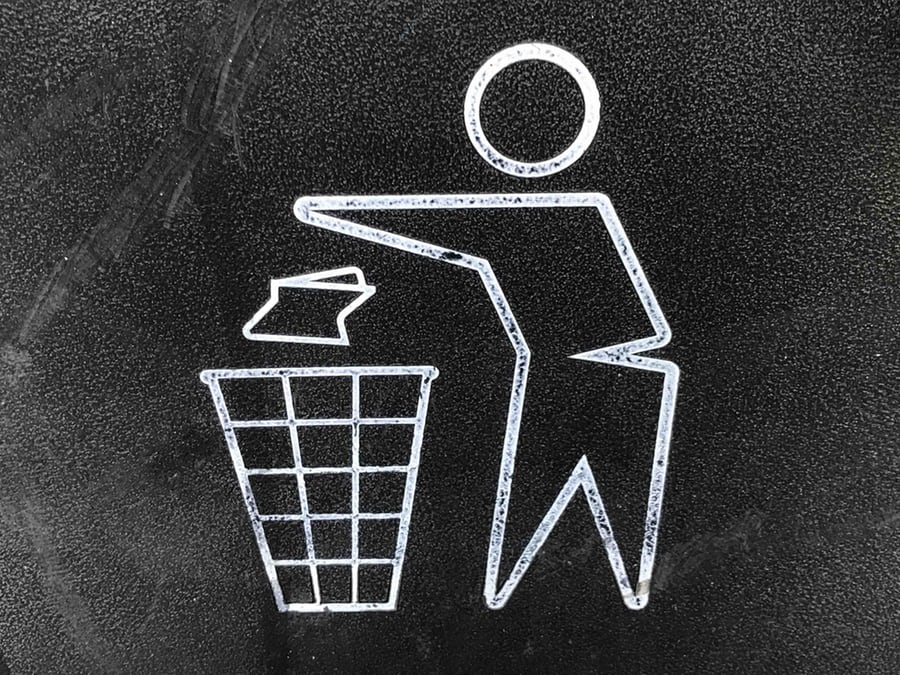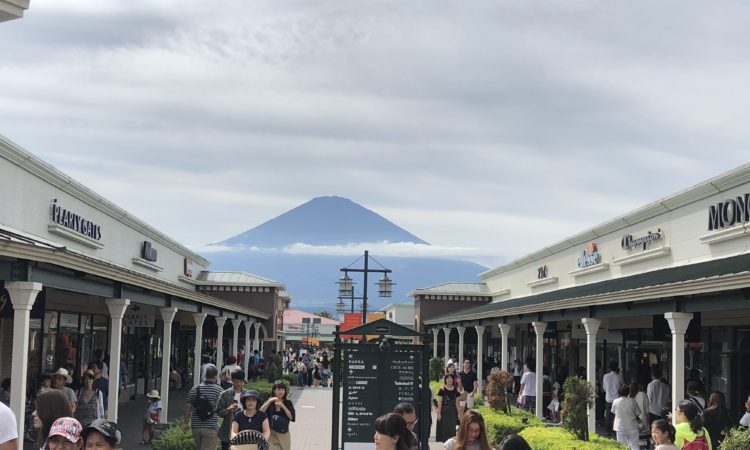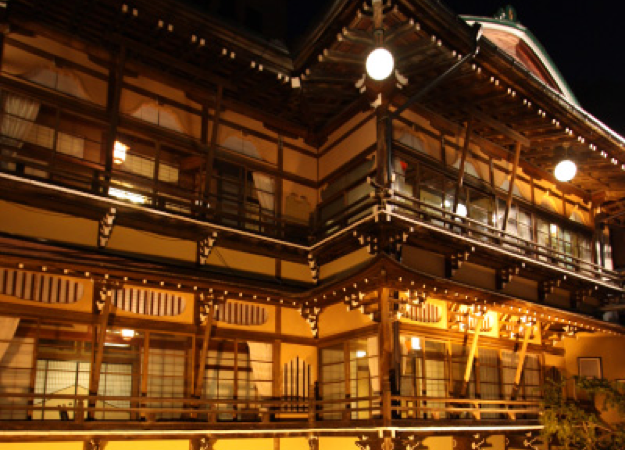Japan has one of the worst recycling rates of any developed country in the world at 19% according to the OECD in a report from 2014. Not to mention, recent reports from the Japanese Government suggest that that percentage has only increased by 2% since then.
However, this does not mean that Japan is slacking or lax in their recycling and garbage habits, on the contrary, much of Japan’s population is very on the ball about garbage and recycling habits. So, if you don’t want to end up on your neighbours’ bad side or the bad end of a complaint to your local community office then it’s suggested that you get the garbage rules of Japan down pronto.
Garbage in Japan is not something that you can just throw away and be done with it, there is a large level of preparation involved before you can toss everything out. There are multiple different types of garbage, recyclables do and don’ts that make up this system in Japan, as well as all the different vocabulary and associated signs that help direct what goes where.
Regular Garbage
The regular and non-recyclable items are referred to as 燃やすごみ, (moyasu gomi). This refers to burnable/combustible trash. Items that are able to be incinerated, so stuff like food waste, old clothes and paper for example.
Another type of regular garbage is a category called kitchen waste or 生ごみ (nama gomi), these include those like fruit/vegetable peel, egg shells, and any other food item will leave a smelly odour if left for too long in the trash. They are often separated into individual bags or wrapped in newspaper to prevent bad smells from emerging. This can be especially important during Japanese summers when it gets incredibly hot and humid.
燃やすごみ is usually picked up by the city workers twice a week, although this can and will depend on exactly where you live so make sure to check with your local government website. Another thing that is effected by where you live will be where you need to take your trash on the day of collection. If you live on your own, you will most likely see an area on the street to leave your trash on the morning of pick up days, usually with a net around them to keep any rodents/birds out. Please remember to always keep track of the time of disposal, in most cities this is by 8AM.
Recyclables
In Japan, recyclables are called 資源ごみ (shigen gomi). As mentioned earlier, recycling is a big thing in Japan and plays a very important role in some communities, such as those like Nagano prefecture who takes extreme pride in being the No.1 prefecture in Japan when it comes to recycling.
You are expected to separate your recyclables in three distinct types each in their own bags/containers:
- カン, cans
- びん, glass bottles
- ペットボトル, plastic bottles
In Japan, you are expected to take the wrapping off the plastic bottles before recycling, as these plastic wrapping go in the 燃やすごみ. However, worry not, most manufacturers perforate the wrapping on their bottles to make it easier for consumers to take the wrapping off.
Another thing that is location dependent with regards to trash is that in some cities, foam trays and boxes are included in recyclables and should be taken out alongside cans, glass bottles and plastic bottles.
Recyclables are usually picked up once a week on a designated day set by the local authorities, so make sure to check with them! As with garbage, you can take your recyclables out and leave them on the side of the street on the designated morning.
Plastic Container Recyclables
There is also an additional class of recyclables in Japan that you don’t really see elsewhere called 容器包装リサイクル (youki housou risaikuru). This refers to plastic items that have particularly strong smells attached to them. Some examples of these items include plastic food trays, plastic yogurt containers and plastic shampoo bottles. You must always remember to wash and clean these items before sending them to recycling.
Once again depending on the city and area, you will have 1.) different days for the collection of these items and 2.) different areas where they are picked up from, so make sure to check with your local authority.
Non-Burnable Garbage
The final general type of trash that you can find here is 燃やさない (moyasanai gomi). Non-Burnable items must be handled more carefully as they can be dangerous to the environment or the people around it. An example of 燃もやさない can include glass materials such as light bulbs, containers, makeup, medication, spray cans, cooking pans, knives and lighters.
The pick ups for these items are the rarest of the bunch, usually twice a month in most cities, and will likely fall on the first and third Friday of each month. Always ensure to check with your local authority first though, as to not miss your trash day or just leave rubbish on the street and annoy your neighbours.
Oversized Garbage
Called 粗大ごみ (sodai gomi), many cities in Japan will have different definitions of what constitutes as ‘oversized’ but the general rule is any items that reach over 30cm in length will be considered as one. When compared to other countries, where in getting rid of oversized garbage you either take your trash to a tip or landfill or just leave it with the rest of trash on the side of the road, Japan’s system can seem complicated, plus you have to pay for it.
For example, if you wish to dispose of an old tv, you would have to call up the trash collectors to make a appointment or sign up for one online. A disposal of a tv in Tokyo will cost around ¥2000. After the appointment is made you will be informed of what stickers, 粗大ごみ処理券 (sodai gomi shori ken), you must purchase. Stickers are all available for purchase from local convenience stores. You will then stamp these stickers to the item you are disposing of as proof of your purchase. Once the day of pick up arrives, you place it outside to wait for pick up.
Symbols
If you still need some extra assistance here are the symbol which should be present on nearly all items that are recyclable in Japan and their corresponding waste containers and bags:
 Paper (紙, Kami)
Paper (紙, Kami) Plastic (プラ, Pura)
Plastic (プラ, Pura) Aluminium (アルミ, Arumi)
Aluminium (アルミ, Arumi) Steel (スチール, Suchiiru)
Steel (スチール, Suchiiru)-
 PET Bottles
PET Bottles
Key Rules to Remember
- Designated garbage bags are classified into different colours, and each city has different colouring for each type of garbage. These bags are sold in supermarkets and convenience stores, this ensures that we use the correct ones to lessen the burden of the garbage men when they are taking out the trash. It can be time consuming to do this, but if you stay on top of your game then it can be very easily done.
- Be sure that you sort your trash correctly, because if not, there will be big consequences. If the garbage men find that your trash has not been sorted properly, they will plant a big red sticker on the front of your bag and leave it in plain view of the whole street on the sidewalk as a mark of shame. This is something you do not want your neighbour to see.
- Garbage collection, dates, areas, and rules will all differ depending on your location & area and in some circumstances depending on how many people are in your household. There will always be a local guide available somewhere online or at your local city office which you can access to keep up to date with the rules and dates of your garbage collection. In some prefectures such as Nagano, when you purchase a house you will be taken to an orientation where they teach you all the rules about garbage and recycling in the area.
- Trash collection time varies, as it can be anything from 8:00AM to 10:00AM. Make sure to take the trash out before the scheduled time, or you might miss it and have to wait another week for garbage disposal. While you can get up the night before and take it out to leave overnight, not every community and area is fond of this and some places frown upon actions like this and upsetting your neighbours is something you never want to do. So ensure to keep on top of the neighbourhood rules as well as the local ones.
- Remember to always follow the 3 Rs (reduce, reuse, recycle), as it is highly encouraged. If you can reuse something, then ensure that you do. The less you use then the easier your trash days will be when it comes to sorting and collecting.
- Some areas will require you to write your name on the trash bag before putting it within the collection area. Always double-check the local rules and use a black permanent marker to clearly write your name. If there are issues with your trash, this way the landlord can easily give your trash back to you. However, if you follow the rules above, this is unlikely to happen.
Other Disposal Methods
In addition to your personal waste disposal in your own home, there are always supermarkets and convenience stores that you can take advantage off. This will allow you to dispose of packing and miscellaneous garbage in store, saving you a bit of time and space from having to dispose it in your house. A great all-round idea.
Many shops now have recycle bins right next to the check out or exit. So, if you want to, you can unwrap your shopping there and throw it away before even leaving the store. This helps stopping the clogging up of your own personal garbage bins and save yourself a little bit of work.
Your trash, Someone else’s treasure
While you may no longer want that chair, tv or set of clothes, someone else may be very happy to take it off your hands. Jimoty is a free bulletin board that allows local people to communicate with each other, with multiple channels like job offers or pet adoptions. Jimoty has a lot to offer, However, it is most well-known for the listing of items that people no longer want or need and which others can take for a free or very low price.
Instead of disposing an old tv for ¥2000 why not try and list it on Jimoty instead and get rid of the thing for free and make someone else very happy? Free, less confusing and less time consuming than purchasing some stickers to plaster your item with.
Furthermore, there is also Mercari, which functions as an online flea market which you can use to sell any other items such as clothing or electronic devices which would be easier to sell than dispose of. Always remember to think about whether just because you don’t like the item, it doesn’t mean that no one else will.
A Convenient and Cheaper Alternative
In recent times more and more supermarkets (and retail stores) have started incorporating a plastic bag tax, which adds on either ¥3 or ¥5 depending on the size of the bag to your total cost if you want to use a plastic bag. I highly suggest the purchase of a eco-bag or a bag for life, which will greatly help in bringing down plastic waste. I use an eco-bag back home in England and it has saved me a lot of money which would otherwise be spent on buying plastic bags. Eco-bags are still super light to carry and are usually stronger and larger than normal plastic bags and will be very helpful when carrying your groceries home.
A Cleaner Planet
Hopefully this helpful guide has gotten you up to speed on everything you will need to know about garbage, recycling and disposal in Japan. I know it can be a very intimidating and confusing process at first, especially compared to what you may be used t, with all the different classifications, colours and rules that must be followed. This is something that must be adhered to though if you wish to live in Japan as it is a big part of the lifestyle here to recycle and dispose of waste properly, to help ensure that we are all doing our part to keep the planet clean.






